
The 11 Most Common Contaminants In Australian Drinking Water
July 6, 2022 2:46 pm Leave your thoughts
One of the many benefits of living in Australia is that we have easy access to reasonably clean drinking water.
But how clean is our water, really?
You might be surprised to learn that Australian water can harbour a variety of contaminants. These contaminants range from relatively harmless sediment particles through to potentially dangerous chemical compounds, including trihalomethanes and agricultural pesticides.
To help you learn more, this guide will identify the 10 most common contaminants which can often be found in Australian water. We’ll also share information on how to deal with each contaminant type.
For more information, give us a call on 02 6646 8565 or email us.
Contents
How Does Water Become Contaminated?
Events Which Can Change Water Quality
How To Learn Which Contaminants Are In Your Water?
Common Contaminants Found In Australian Water
– Chlorine
– Sediment
– Chloramine
– Rust
– Fluoride
– Micro Plastics
– Parasitic Cysts
– Bacteria
– Nitrates
– Heavy Metals
– Dissolved Solids (Hard Water)
How Does Water Become Contaminated?
All natural sources of water will have contaminants of some type, due to natural and manmade factors.
Contamination can occur very quickly because water naturally absorbs and transports many types of substances as it travels about.
Rainwater, for example, will accumulate dissolved gases as it falls through the atmosphere. This can include chemicals like sulphur dioxide (SO2) and nitrogen oxides (NOX), which are primarily responsible for acid rain.
Once water is on the ground, it begins to absorb naturally occurring a huge range of compounds, substances, and living organisms. This can include minerals, gases, bacteria, viruses, protozoa, algae, decaying organic matter, animal waste, and sediment (rocks, sand, silt).
During its travels in the natural environment, water may also absorb contaminants produced by manmade activities. This may include fertilizers, pesticides, herbicides, petrochemicals, runoff from landfills and dumps, road salt, sewerage, and industrial waste.
Once a water source has been designated as being for human consumption, most of these contaminants are treated. However not all contaminants are removed and additional contaminants will be introduced into the water during this process. This usually includes disinfection agents like chlorine and chloramines.
While these disinfection chemicals do a wonderful job of killing pathogens in the water, they can negatively impact the flavour and aroma of your water. Chlorination can also introduce dozens of other chemicals into the water, as it interacts with decaying organic matter, called disinfection by-products (DBPs).
Some of the DPBs which are introduced are potentially toxic substances, like trihalomethanes (more on that shortly).
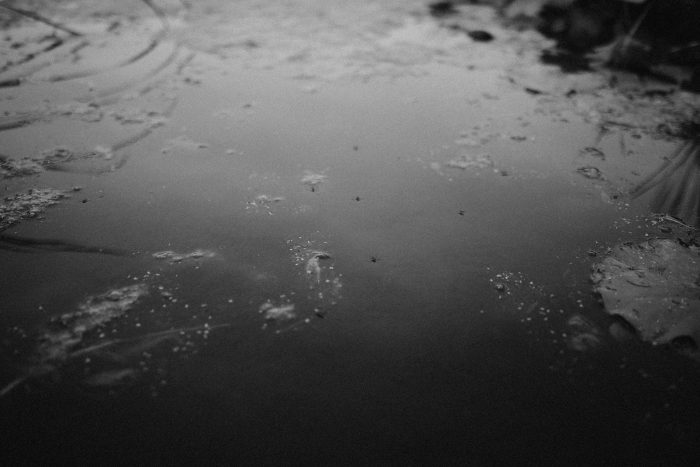
Events Which Can Change Water Quality
It’s worth noting that the types of contaminants in your water can change over time due to natural or manmade events including:
- Blackwater events
Blackwater events occur when a flood, bushfire, or another catastrophe causes a build-up of organic matter to be swept into local waterways. These events can increase the amount of sediment, bacteria, and protozoa contaminants in water. - Cyanobacteria (blue-green algae)
Blue green algae has been an increasingly common issue in Australia in recent years. Although called algae, these events occur when a type of bacteria called cyanobacteria begins to breed out of control. - Increasing water salinity
Erosion or drought may lead to salt levels naturally increasing over time. The effects of climate change may also contribute to salinity. - Bushfires
Bushfires can contaminate waterways with ash, dead animals, and debris. They also add more nitrogen and phosphorus to waterways, which increase the risk of algal blooms and pH imbalances.
How To Learn Which Contaminants Are In Your Water?
It’s not always easy to tell if you have microbiological, chemical, organic, or mineral contaminants in your water. While some contaminants will change the taste and aroma of the water you drink, others are undetectable unless you have your water scientifically tested.
Fortunately, government agencies usually provide information on the quality of treated town water. While the quality of the reporting can vary between different water authorities, they should at least give you information about the levels of chlorine, disinfection by-products, and sediment present in the water.
If your local water authority has very poor reporting or does not report on a contaminant you are concerned about, you can take matters into your own hands and have the water tested by a laboratory.
People using tank, bore, river, or dam water usually have to have their water tested in a laboratory to discover if there are contaminants which are potentially dangerous or negatively impacting the quality of the water.
Testing water can be very useful as it helps you understand the types of water filtration required to make it safe to consume.
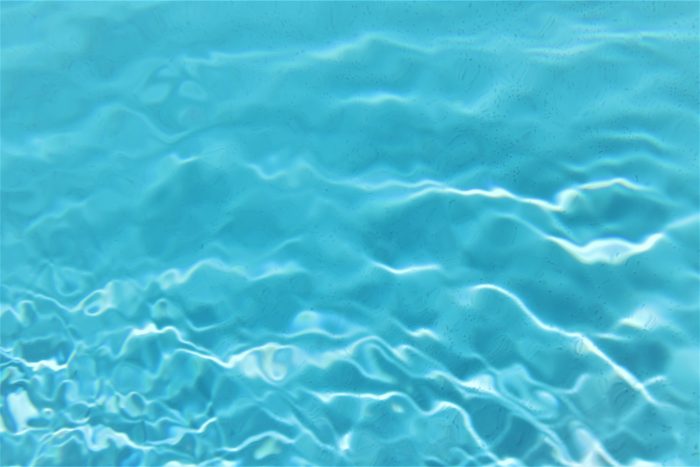
Common Contaminants Found In Australian Water
Here are 10 contaminants which are often found in Australian water. Some are only found in treated town water while others are confined to tank, bore, or river water.
#1 – Chlorine
Most cities and towns in Australia will add chlorine to their water supply to kill bacterial, viral, algal, and protozoan pathogens.
While chlorine does a great job of eliminating these illness-inducing nasties, it contaminates the water supply in several ways.
For starters, chlorine can adversely impact the taste and odour of water. This makes drinking town water much less palatable as you have to deal with a strong chemical taste and odour.
Chlorine exposure can also negatively impact your family’s health. There have been numerous research papers linking chlorine to health problems including:
- Asthma
A 2004 study found that exposure to chlorinated water increased exercise-induced asthma symptoms in athletes. This was true even when the levels of chlorine were below recommended levels. If you shower in chlorinated water, you may be exposed to even higher levels of chlorine as you are breathing in chlorinated steam and absorbing it through your pores. - Food allergies
A recent study found that dichlorophenols, which are chemicals found in chlorinated water, can increase the likelihood of food allergies. - Disinfection by-products
Disinfection by-products like trihalomethanes (chloroform) and haloacetic acids are created whenever chlorine interacts with decaying organic matter in water. Researchers suspect that some DBPs are carcinogenic. There is also some evidence that trihalomethanes may increase the rate of birth defects. A Taiwanese study involving more than 400,000 participants found that women exposed to Trihalomethanes in chlorinated water were more likely to give birth to children with one of three birth defects: cleft palate, ventricular septal defects, and poor brain development.
Chlorine can also have a damaging impact on your hair and skin.
In terms of skin damage, bathing or showering in chlorinated water will strips away the natural oils that protect the skin. This can lead to dryness, redness and cracked or flaking skin.
If you or your children have a skin condition like psoriasis or eczema, exposure to chlorine can be even more damaging, causing serious flare-ups. Fortunately, chlorine can be removed using a shower water filter or bath filter.
Chlorine damages hair by dissolving the oils and proteins that make up individual strands of hair. It can cause hair to become very brittle, dry, dull, and lifeless.
How To Remove Chlorine From Drinking Water
Activated carbon water filters are a fantastic option for removing chlorine from water. As water flows through the carbon in the filter, chlorine and other chemical molecules become stuck on the carbon’s pores, removing them from the water supply.
Check out our range of filtration systems for chlorine removal.
#2 – Sediment
Sediment refers to the heavy material that settles at the bottom of water. It can include sand, silt, metal, rocks, minerals, remains of plants and animals, algae, and so on.
Sediment can be present in both natural sources of water and manmade sources. It can occur just as easily in a water tank as a water pipe, riverbed, well, or bore.
Sediment contamination can be a problem for several reasons:
- It can make drinking water look and taste bad
- Heavy sediment water can discolour the clothes you put in your washing machine
- Sediment build-up can damage hot water tanks and other appliances in your home
How To Remove Sediment From Drinking Water
Sediment is one of the most common physical contaminants in water. Fortunately, it is also one of the easiest to remove.
Any pleated washable sediment filter or polyspun sediment filter can remove sediment down to a very fine level. Re-usable screen filters are also a popular choice for coarser sediment particles as they can last several years.
For water with very high levels of sedimentation, like water from a river, bore or dirty tank, a bag filter may be useful as it can support higher water flow rates. Both nylon and felt polypropylene bags are available.
Take a look at our range of sediment filter cartridges.
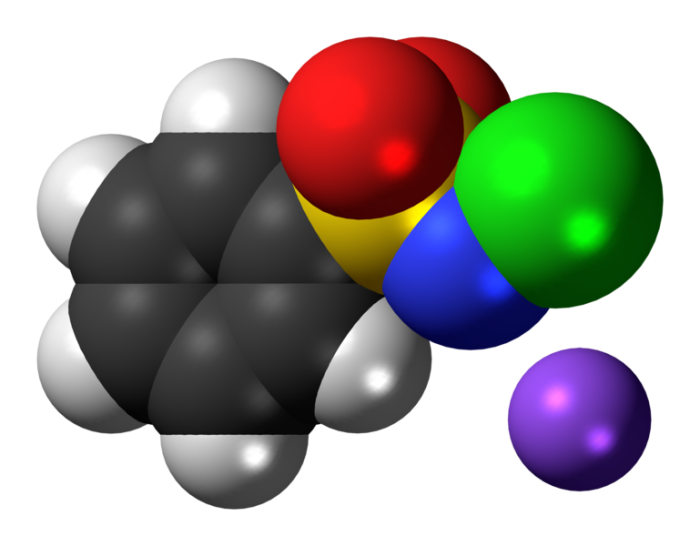
#3 – Chloramine
Chloramines are a combination of chlorine and ammonia. They are increasingly used by Australian water authorities for water disinfection, as they have a longer persistence in water and do not produce as many disinfection by-products.
There are multiple forms of chloramines, including monochloramine (NH2Cl), dichloramine (NHCl2) and trichloramine (NCl3).
The type of chloramine created when ammonia is combined with chlorine varies based on the pH of the water. If the water is quite acidic (pH less than 4.4), trichloramine is formed. If it is between pH 4.4 – 6.0, then dichloramine is formed.
If the water is neutral (7 pH) or higher, monochloramine is created formed. Most town water sources in Australia will have a pH close to 7, making monochloramine is most common form of chloramine.
Unfortunately, there are several downsides to using chloramines, including:
- Chloramines Smell terrible
Water with high levels of chloramines can smell like a heavily chlorinated swimming pool. Not particularly appealing when you take a sip! - Disinfection by-products
Although chloramines don’t produce a large amount of Trihalomethanes, they can create Nitrosamines and Iodoacids – two types of chemicals which some researchers suspect are dangerous to humans or animals. - Corrosion
Chloramines can combine with other chemicals and become mildly corrosive to metal. If your water is already slightly acidic, this can lead to damage of metal pipes and surfaces. Nitrification can also occur when the ammonia in the water converts into nitrates, which cause even more corrosion. - Chloramines Can Be Toxic For Certain Types Of Animals
Chloramines are toxic to reptiles, aquatic animals, and amphibians. If you keep these animals at home, it is essential that you remove chloramines from your drinking water. - Unsuitable for Hemodialysis
Water containing chloramines cannot be used dialysis fluid as it can enter the blood of patients and causes haemolytic anaemia.
How To Remove Chloramines From Drinking Water
Chloramines are harder to remove from water than chlorine, because they have a more complex molecular structure.
Activated carbon can remove them effectively, but it will require much more contact time than it would for chlorine removal. This means activated carbon is only useful for chloramine removal at slow flow rates.
Catalytic carbon is much better choice for chloramine removal. It is a special form of carbon which has been processed to have more pores on its surface. The additional pores help it remove contaminants at a faster rate and gives the carbon more capacity for chemical removal. It can ‘catalyse’ or ‘break up’ more complex chemical molecules, which improves contaminant removal at higher flow rates.
Another option is KDF. KDF is a proprietary blend of copper, zinc, and other metals. As oxygenated water flows through the KDF, an electrochemical process called reduction/oxidation occurs, with certain contaminants losing or gaining electrons to change in form. As chloramine molecules flow through the KDF, they are broken up into their base components.
#4 – Rust
Dilapidated infrastructure like old water pipes and water tanks can often corrode and begin to break down. This can introduce rust and other metal particles into the water supply.
Although using water contaminated with rust isn’t a major health concern, it can be inconvenient. Rust can stain clothing and discolour drinking water. Rusty water can be destructive to appliances like dishwashers, coffee machines, and washing machines.
How To Remove Rust From Drinking Water
Rust can easily be removed using a sediment filter.
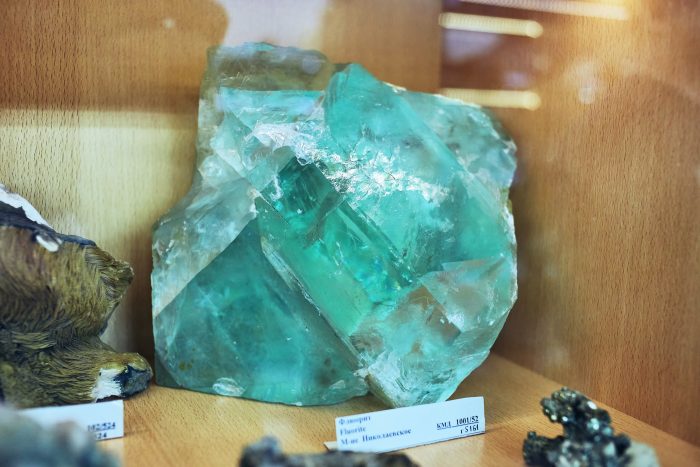
#5 – Fluoride
Fluoride is a naturally occurring mineral which can be found in both seawater and freshwater. It plays a critical role in the mineralisation of our bones and teeth, helping them to stay hard and strong
Most Australian water authorities will add fluoride to drinking water because it has been proven to help prevent gum disease. They typically use easily-dissolvable forms of fluoride like sodium fluoride (NaF), hydrofluosilicic acid or hexafluorosilicic acid (H2SiF6) and sodium silicofluoride (Na2SiF6).
Although the Australian government says adding fluoride to drinking water is safe, some people disagree. They suggest that the forms of fluoride being used or the amount of fluoride being added are dangerous to human health.
It’s important to note that the relationship between fluoride consumption and potential health problems is still being debated. The American Cancer Society has looked at dozens of studies and says there is no definitive link between fluoride and cancer. Australian health authorities say it is completely safe and plays an important role in maintaining good dental health.
However, there may be a link between certain thyroid problems and fluoride. A recent study published in the journal Scientific Reports found that people who consumed higher levels of fluoride in water had an increased chance of having thyroid issues. This is the reason why doctors often tell people with thyroid issues to avoid fluoride.
There is a Chinese study which suggests that children exposed to higher levels of fluoride had worse cognitive performance. However, the study in question was small scale and only indicated a correlation, not a causation.
How To Remove Fluoride From Drinking Water
There are several approaches to removing fluoride from water. The most common is activated alumina filters, which absorb fluoride from water. The Fluoride Reducing FL051 filter uses active alumina.
There are also proprietary blends of minerals which can remove fluoride, like the ‘Zeolite’ minerals used in the AMB/10.
Because fluoride reduction filters require a lot of contact time, these types of filters can only work with slower flow rates (less than 3 litres per minute). This means they are useful for drinking water systems, but not for high flow whole house units.
#6 Micro Plastics
Microplastics are microscopic plastic particles found in the environment. They are a result of the disposal and breakdown of plastic products including soft drink bottles, food trays, toys, and so on.
Microplastics are so small that they can become airborne and pass through the gut barrier into the bloodstream, if ingested or inhaled. Researchers believe that microplastics and associated contaminants like Polycyclic Aromatic Hydrocarbons (PAHs) may contribute to:
- Oxidative stress
- DNA damage
- Inflammation
- Reproductive toxicity
- Carcinogenicity
The volume of microplastics already in the environment is truly staggering. According to researchers from Kyushu University, there are approximately 24.4 trillion pieces of microplastics in the world’s upper oceans, with a combined weight of 82,000 to 578,000 tons. This is the equivalent of roughly 30 billion 500-ml plastic water bottles.
How To Remove Microplastics From Drinking Water
Currently, the smallest detected microplastics are 1.6 micrometres or 1.6 microns in size. This means any sediment filter or carbon filter rated below 1.6 microns should be effective at removing microplastics from drinking water.
#7 – Parasitic Cysts
Unchlorinated water can be host to a wide range of waterborne cyst parasites including Giardia, Cryptosporidium, and Cyclospora. They are harmful protozoan parasites and forms of bacteria which can make you severely ill if ingested. Parasitic cysts can be responsible for a respiratory and gastrointestinal illness called cryptosporidiosis.
How To Remove Parasitic Cysts From Drinking Water
Any carbon block water filter rated at 1 micron or lower will remove cyst parasites. Look for the NSF 53 rating on your water filter, which indicates a product can remove contaminants harmful for human health.
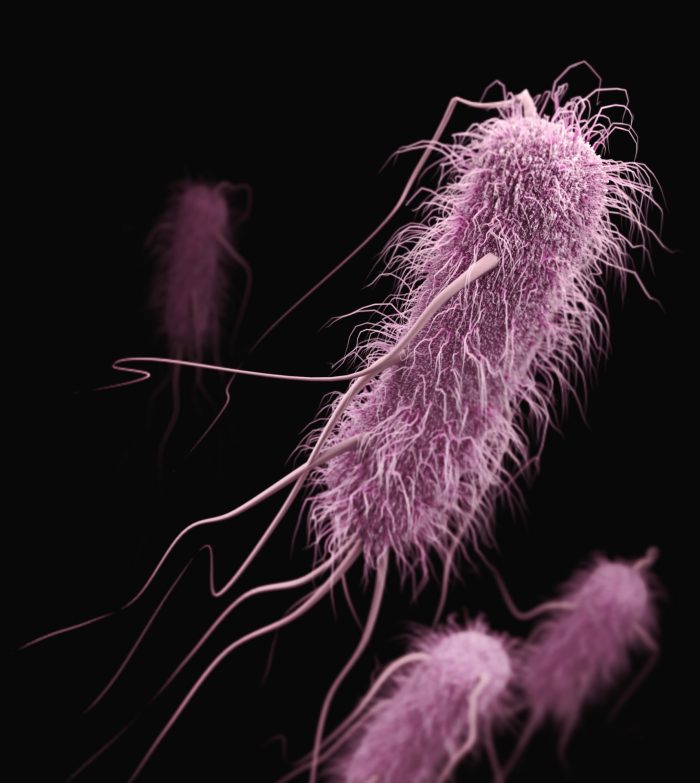
#8 – Bacteria
Untreated tank, bore, and river water can also host a variety of harmful bacteria, usually from animal droppings, rotting vegetation and animal carcasses. Some of the most dangerous forms of bacteria common in untreated Australian drinking water are Escherichia coli (e-coli) and Coliform.
Ingesting bacteria can lead to very serious illnesses including:
- Cholera
- Pneumonia
- Typhoid
- Legionnaire’s disease
- Dysentery
- Tuberculosis and so on
Individuals on chlorinated town water shouldn’t have to worry about bacteria, as proper chlorination will kill any bacterium that are present.
How To Remove Bacteria From Drinking Water
Bacterium can be much smaller than other contaminants, so are harder to remove. While most bacteria are above 1 micron in size, they be as small as 0.2 micron.
The two best options for removing bacteria are:
- Ceramic water filtration
Ceramic water filters use the very fine pore size of ceramics to filter microscopic contaminants. Filters like the Doulton Ultracarb, Doulton Sterasyl, and Cerametix are rated at 0.2 micron nominal (1 micron absolute), which will remove 99.99% of bacteria including E.Coli, Shigella, Salmonella, Klebsiella & Cholera. - Ultraviolet Disinfection
UV systems use powerful ultra violet light to kill or incapacitate bacterial, viral, fungal, and protozoan contaminants. Water flows through a steel cylinder, in which sits a quartz sleeve/thimble and a UV globe. UV systems will kill every living organism in your water, making them a great choice for people on tank, river, or bore water. * Note that water must be filtered through at least a 5 micron or lower sediment filter, to allow the light to penetrate fully through the water. It is not effective on heavily sedimented water.
Bacteria can also be removed using reverse osmosis (RO). However, there are several downsides to using RO systems including maintenance costs, water wastage, and the removal of beneficial minerals from the water.
#9 – Nitrates
Nitrates are natural chemicals found in water, soil and air. In nature, it is rare for nitrates to pose a significant threat to human health.
However, Nitrates are also used to manufacture chemical fertilisers, in the form of sodium, potassium, calcium, ammonium, and magnesium salts. The nitrates in these fertilisers can persist in the natural environment and run off into rivers, streams, and lakes in high levels.
When water with high levels of nitrates is consumed, it can have a negative impact on human health. The main issue is that Nitrates can impact the ability of red blood cells to carry oxygen around the body. This can lead to symptoms including weakness, excess heart rate, fatigue, and dizziness.
Infants are particularly vulnerable to nitrates and may suffer from a life-threatening condition known as blue baby syndrome where they cannot access enough oxygen.
The Australian drinking water guidelines suggests that water with up to 50 mg-NO3/L (as nitrate) can be safely consumed by infants and water with up to 100 mg-NO3/L can be safely consumed by adults.
Based on health considerations, the concentration of nitrite in drinking water should not exceed 3 mg-NO2/L (as nitrite).
How To Remove Nitrates From Water
Fortunately, most Australian drinking water supplies aren’t contaminated by high levels of nitrates. It is usually a rare issue experienced by people using contaminated dam or river water which has a lot of agricultural run-off going into it.
Nitrates are very difficult to remove from water. The only viable approaches are reverse osmosis, distillation, or through ion exchange resin.
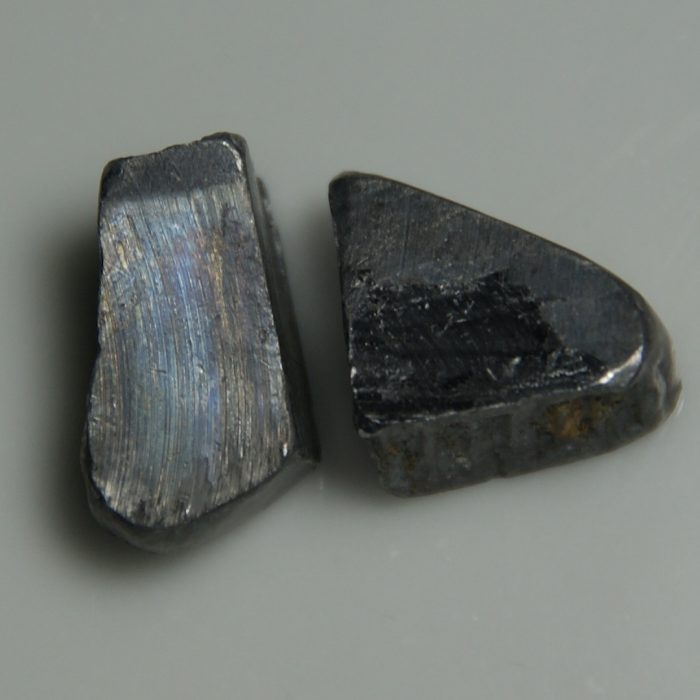
#10 – Heavy Metals
Heavy metals are metals with high densities (atomic weights). They include metals like lead, arsenic, copper, cadmium, and mercury.
When ingested, they can disrupt cellular events including cell growth, proliferation, differentiation, and damage-repairing processes. This disruption can trigger a variety of health problems including immune system dysfunction, nervous system damage, kidney disease, and rheumatoid arthritis.
How To Remove Heavy Metals From Water
All filters containing activated carbon can remove heavy metals from water. However, their performance will vary greatly, based on its surface area, activation method, functionalization degree, and the actual carbon source (coal vs coconut). Some of the carbon filters specifically designed for heavy metal removal, include:
- Multipure 10” x 2.5” WC04 0.45 Micron Carbon Block
- 5 Micron Lead Reduction Carbon Block 20″ x 4.5″ 2045LRC0.5
- CK5615 Omnipure Lead Reduction Filter
#11 – Dissolved Solids (Hard Water)
Hard water contains a high level of dissolved minerals, which have been adsorbed as the water has travelled through rocks and soil.
The level of hardness in the water will vary based upon where you live, due to the unique geology of your catchment area. People living in Queensland, Northern Territory, South Australia, and Western Australia typically have hard water.
Hardness is usually described in two ways:
- Temporary hardness
Refers to the dissolved minerals which precipitate out of the water when it is boiled. These are the minerals responsible for forming scale in hot water systems, coffee machines, dishwashers and other appliances. Mostly consists of calcium and magnesium carbonates/bicarbonates. - Permanent hardness
Refers to the dissolved minerals which remain in the water even when it is boiled. This includes a variety of minerals which are sulfates, chlorides, and nitrates. Having high levels of these types of minerals salts can be corrosive to stainless steel.
Total hardness refers to temporary and permanent hardness combined.
How To Remove Hardness From Water
When it comes to hardness, most people will be concerned about temporary hardness as it is primarily responsible for scale. The simplest ways to deal with temporary hardness are polyphosphate, ion exchange resin, and KDF.
Polyphosphate is a natural compound which will sequester (lock up) dissolved calcium ions in the water, making it more difficult for them to harden and form scale. It dissolves over time as it leaches into the water.
KDF causes dissolved calcium carbon/bicarbonate to precipitate from the water and form aragonite – which doesn’t form scale. It’s important to note that KDF will only partially reduce scale and is not a standalone solution. This is why KDF is often used in partnership with polyphosphate and carbon.
Ion Exchange Resin consists of small resin beads which have been treated so they contain thousands of tiny cracks. As the hard water flows through the beads, some of the mineral ions are exchanged for the ions in the cracks of the beads (typically sodium (Na) or hydrogen (H)).
Ion exchanger resins are either cation exchangers, which exchange positively charged ions (cations), or anion exchangers, which exchange negatively charged ions (anions).
To remove the temporary hardness which forms scale, a cation resin will be used, because calcium/magnesium carbonates have a positive charge.
To reduce total hardness a ‘mixed bed’ resin is used, which has both cation and anion resin beads. This allows the resin to capture both negative and position ions in the water, including bicarbonates, carbonates, sulfates, chlorides, and nitrates.
Some of the products designed to reduce hardness include:
- 1025Phos/GAC (Polyphosphate)
3M Australian made 10” x 2.5” Filter cartridge containing polyphosphate and granular activated carbon. - 2045GACphos (Polyphosphate)
A refillable 20” x 4.5” Filter For Whole House Systems, containing polyphosphate and granular activated carbon. - Brita C150 Finest (Ion Exchange Resin)
Contains mixed bed resin to reduce total hardness and protect appliances from scale/corrosion. - Brita C150 Quell ST (Ion Exchange Resin)
Contains cation resin to reduce temporary hardness and protect appliances from scale/corrosion. - 3M P124BN Triple Action Scale Control Filter
Triple action filter that contains resin to reduce hardness. Ideal for Coffee and Vending machines, Steamer, Combi Oven, and Water Filtration. - 3M HF25-S Scale Reduction Filter
This is a high performance, hi flow filter designed for use with espresso machines. It uses polyphosphate to reduce scale build-up. Also reduces Chemicals & Sediment while maintaining the ideal pH for coffee and vending machines.
#12 – Chemicals
There are a variety of dangerous chemicals which may make their way into the water supply and can pose a health risk for humans. They include:
- Chemical Pesticides, Herbicides and Fertilisers
If there is farmland near the catchment area for your water supply, your water may adsorb some of the chemical products used by farmers on their crops. - Poly and Perfluoroalkyl Substances (PFAs)
PFAs are a class of over 4,000 different chemicals. These chemicals are used in everything from plastic products to firefighting foams and water repellents. Unfortunately, some PFAs have been found to be toxic to humans and can increase of serious diseases like cancer. - Volatile Organic Compounds (VOCs)
VOCs are carbon-based chemicals that evaporate at room temperature. Many common household products contain VOCs including cleaning products and paint. The most common VOCs include acetone, formaldehyde, benzene, ethylene glycol, perchloroethylene, xylene and toluene. They can cause a variety of health issues including eye, nose and throat irritation, headaches, fatigue, shortness of breath, dizziness, nausea, and skin problems. Long term exposure can cause damage to the liver, central nervous system, kidneys, and other organs.
How to remove chemicals and pesticides
Carbon to the rescue once more! Activated carbon does a wonderful job at removing most forms of chemicals. Catalytic carbon is even more effective and a great choice for water that you suspect is high in chemical content.
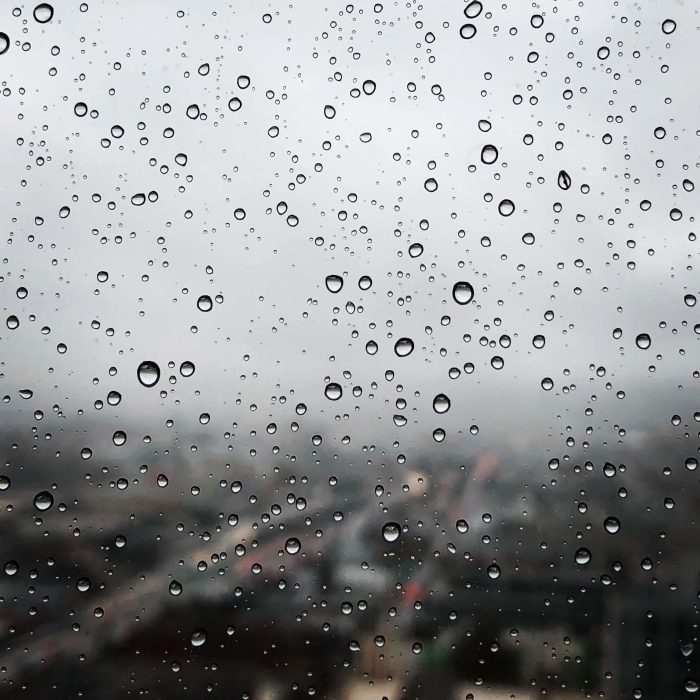
Wrapping Up
As you can see, a wide variety of contaminants can be found in Australian water. Fortunately, proper water filtration can remove most of these problematic compounds and organisms from the water entering your home. For more information, give us a call today or send us an email:
Clarence Water Filters
sales@clarencewaterfilters.com.au
02 6646 8565
Categorised in: Contaminants, Water Filtration
This post was written by Greg
